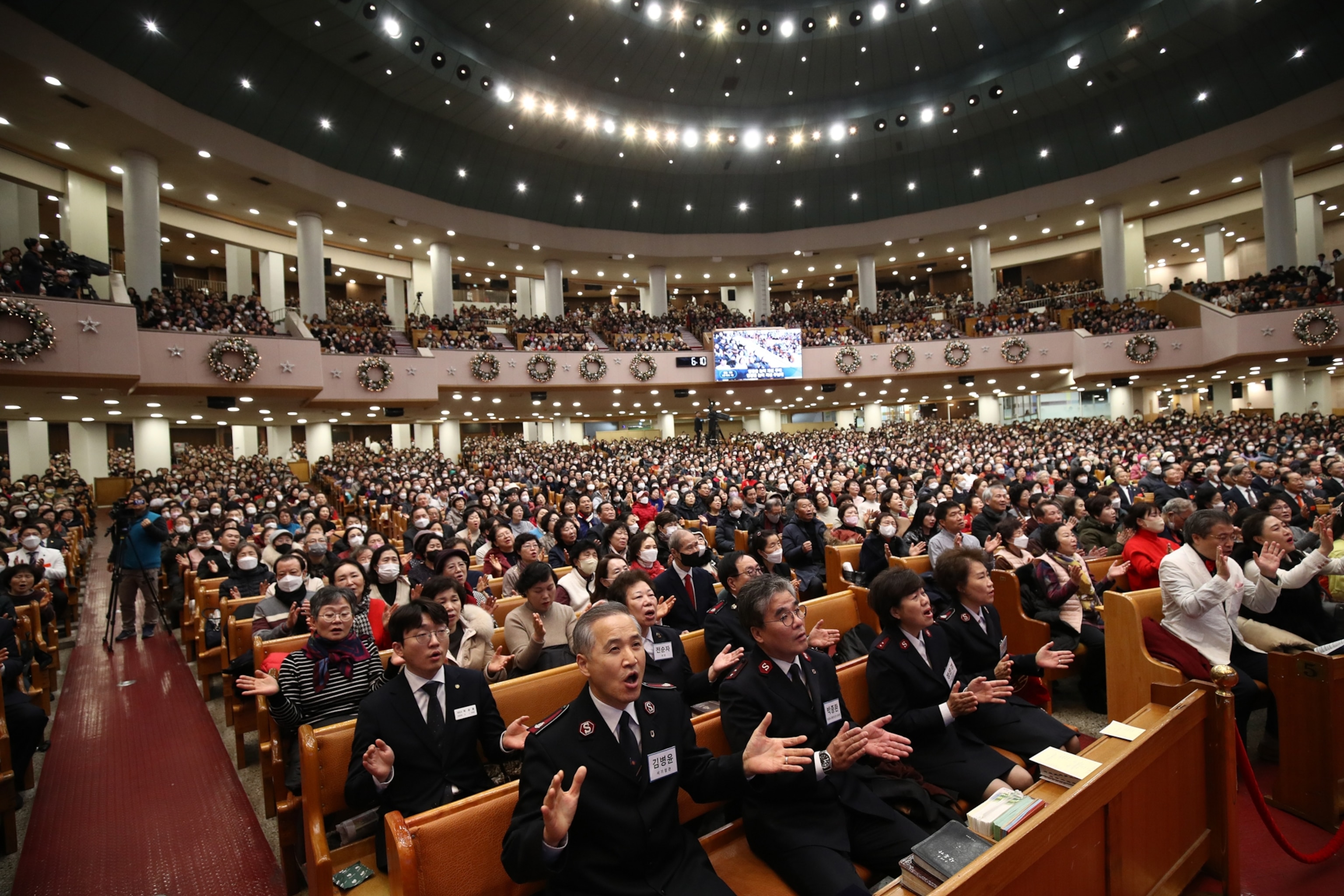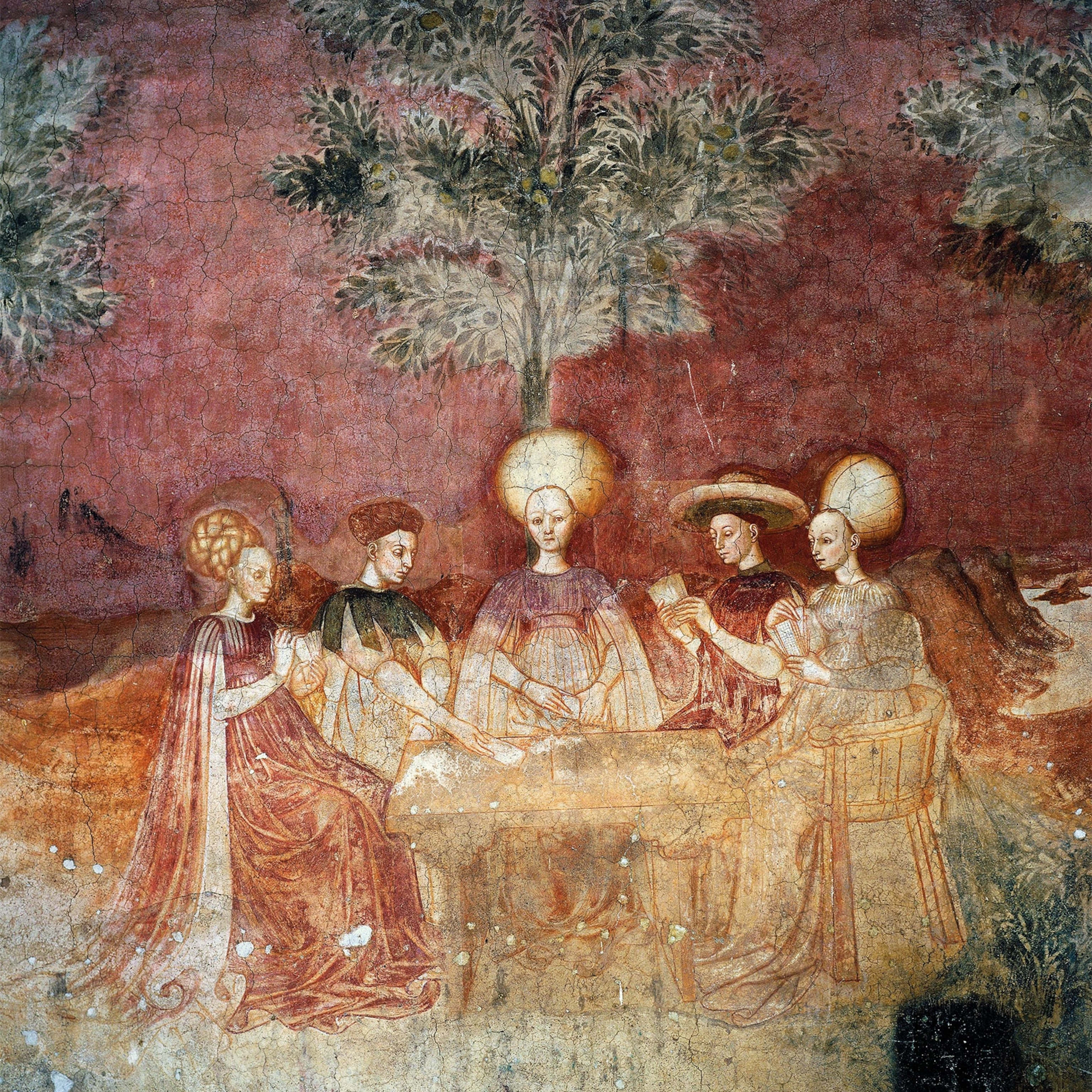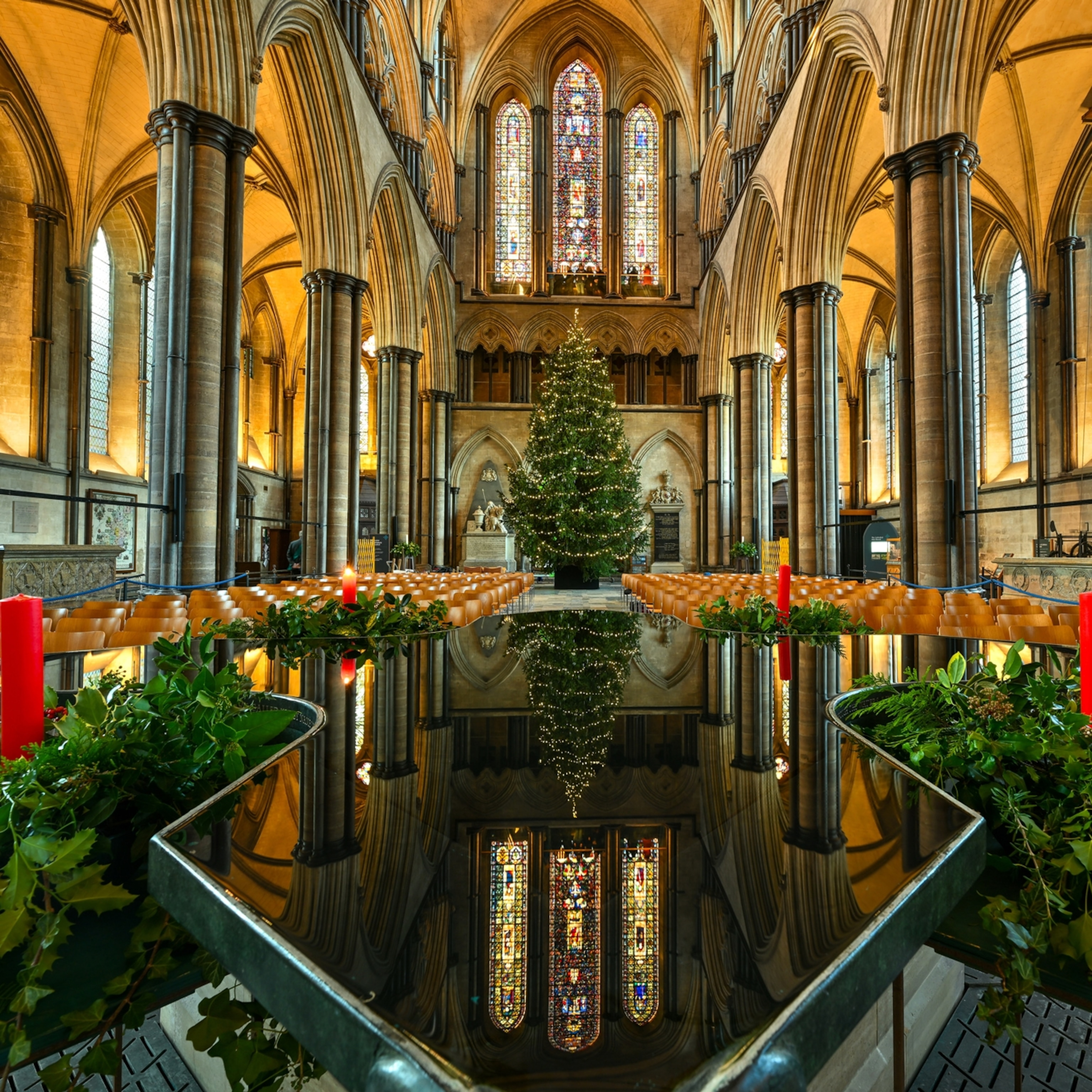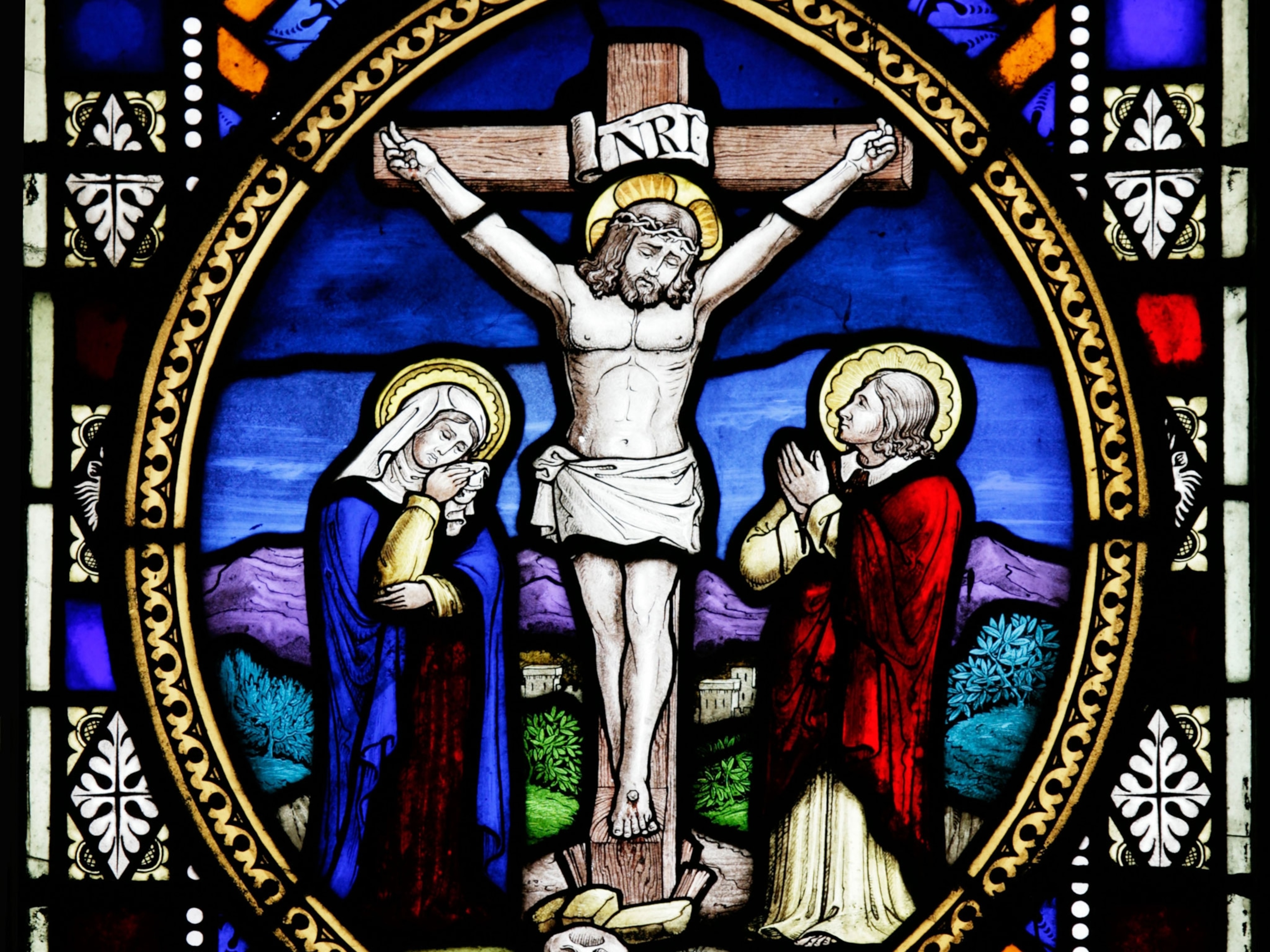America's megachurches are rapidly expanding. That growth isn't happening by accident.
Megachurches and “gigachurches” with upwards of 10,000 congregants are proliferating in the U.S.—with the help of tactics favored by Fortune 500 companies.

It’s Sunday morning at Central Christian Church in Henderson, Nevada, and the black walls of its spotlighted auditorium are pulsating from the music of a seven-piece rock band and the singing, dancing, and clapping of some 4,850 worshippers—more than twice as many as would fill the biggest Broadway theater.
On the pair of giant flat screen monitors that flank the stage, a steady procession of worshippers step into what appears to be an oversized hot tub where they are dutifully dunked and baptized by two church staffers.
It’s a sea of holiness-seeking humanity, but the bodies in those cushioned theater seats—don’t look for wooden pews—are just the tip of an evangelical iceberg: Central’s weekly attendance usually tops 21,000 at not only the Henderson site, but also at a network of satellite campuses across Nevada, nationwide, and even abroad. That’s a lot of worshippers—but small potatoes compared to the world’s largest Christian megachurch congregations, which can number up to 480,000 people.
(Here's what archaeology is telling us about the real Jesus.)
Megachurches are defined by the Hartford Institue for Religion Research as any Protestant Christian congregation with membership exceeding 2,000 members; churches with 10,000 or more, like Central, are known as gigachurches.
It’s not a particularly new phenomenon: Globally, the first recognized megachurch was London’s Baptist Metropolitan Tabernacle, founded in 1861 by the early evangelical preacher and writer Charles Spurgeon. In the U.S., controversial 1920s preacher Aimee Semple McPherson regularly drew 5,000-plus of the faithful in Los Angeles’s Angelus Temple.
What is relatively new is the stunning recent growth of congregations that make those enormous fellowships look like small country churches.According to the Hartford Institute of Religion Research, about 70 percent of American megachurches now have multiple satellite locations—up from 23 percent of churches in 2000. Nearly half of those churches have four or more locations.
That growth doesn’t happen by accident: Most megachurches use geography and demographics to determine where to expand next.

The geography of megachurches
By necessity megachurches and gigachurches nearly always find themselves in the real estate business. Church planners don’t simply throw a dart at a map when deciding where to erect a sanctuary the size of an airport hangar.
For Central Church, that growth started in the mid-1990s, when the single-site congregation moved 10 miles south from Las Vegas to Henderson. The slowly developing suburban town appealed to church leaders because it offered the chance to build on an 80-acre lot while remaining close to Central’s historic congregation. But in the decade that followed, as the suburb exploded and the church began to draw from a wider circle, the logistics of simply getting to church—due to both distance and traffic—became a challenge.
Building additional campuses seemed like a solution. But where?
“We looked at people’s time schedule,” says Bob Wood, Central’s associate pastor. “If you’re asking people to drive 45 minutes to a location for worship, then that’s probably all the commitment they’re going to make. But if they only have to drive 15 or 20 minutes, they might start serving in the church, or at least join a group.”
(What does it take to become a saint in the modern age?)
As small neighborhood churches everywhere have long known, he says, “When the drive gets shorter, the level of involvement goes up.”
For the leaders of Central Church, Wood says, the solution became self-evident: “We started looking for locations within 15 or 20 minutes of our other locations. That’s our goal.”
Thanks In large part to its real estate savvy, Central is now the 13th largest church in the United States, with satellite facilities in nearby Summerlin and Sunrise Mountain, Nevada; plus Kingman, Arizona; Orange Beach, Alabama—and Newcastle, Australia, and Morelia, Mexico, a colonial town west of Mexico City.
(The church’s two international branches both resulted from Central members returning to their home countries rather than its real estate savvy. “We had a fellow here at Central who went back to Mexico and took over his dad’s church, about 15 to 20 people. He’d soaked up our DNA, and wanted to infuse it down there,” says Central Church’s Wood. Now, Central Church Morelia, with about 400 members, is an official satellite of the Henderson congregation.)

How demographics drive church geography
Tracking area demographics, especially population trends, has become a strikingly universal strategy when it comes to settling on a church site, be it primary or satellite. Jack Graham, pastor of Prestonwood Baptist Church in Texas, realized that as far back as the early 1990s, when his congregation was outgrowing its North Dallas digs.
“We had a building in North Dallas that seated 3,500, but we also had real parking issues, and we were in danger of overbuilding in our neighborhood,” says Graham. “Our only other choice was to move. So we consulted the professionals in our church, who determined that many of our newer members were coming to us from up by Plano, where a real population boom was just starting.”
Today, with 17,000 members, Prestonwood is the nation’s 21st largest congregation.
It’s demographics-driven strategy is not unlike those employed by large corporations planning to either relocate or establish new footholds.
“Your Googles and your IBMs try to project, ‘Where should we be based on where the talent is?’” says Elliott Scarangello, who studies workplace and workforce analytics for the corporate consulting firm Cushman & Wakefield. The company does not currently have any megachurches as clients—most megachurches are so large they have at least some congregants with in-house demographics expertise—but Scarangello argues they would ask the same questions as any other major company.
(St. Peter's Basilica contains his tomb... right? Why there's still some doubt.)
“Megachurches will ask, ‘Where are the people who are looking for a large church but don’t have one nearby?’” he says.
The first place to look: Fine-grained population research.
“You want to know how often people in a given area attend church,” he says. “Do they go to church primarily because they’re religious or just because they’re near a church? You can look at how many people are listening to religious radio, but not attending church. That might mean there’s a disconnect between them and whatever churches are nearby.
“And, of course, there are definitely demographic segments that go to church more. Hispanic communities, for example, are much more likely to go to church regularly than the millennial white community. People with children are also more likely to attend church.”
And for large churches planning to open additional campuses nearby, he adds, the most critical calculation is, indeed, drive time.
“But there’s a balance,” he says. “Yes, you want to arrive at a distance where the most people are encapsulated in your optimum zone. But you also don’t want those zones to be too close together, or else you’re going to eat each other up.”
Under Graham’s leadership, Prestonwood bought 140 acres in Plano, about 20 minutes north of the old church building, and built a complex that includes a worship center that holds 7,000. Before long, Prestonwood had shifted from being a suburban church, drawing largely from nearby towns, to a regional one.
Graham has continued to cast his gaze even farther north: Staying one step ahead of the Dallas metropolitan area’s continued expansion (and taking advantage of still relatively low property values) in 2012, Prestonwood dedicated a new 127-acre campus in a town called Prosper, about 25 minutes north of Plano. And it has already bought yet another plot of land in Gunter, another 25 miles north of Prosper. The town is, for now, a modest crossroads—much like Plano was in the 1990s.
“We’ll probably develop Gunther in the not-too-distant future,” says Graham, who points out all of the church’s expansion has occurred alongside the North Dallas Tollway, which reaches to the Oklahoma border.
“It’s kind of our Roman Road,” he adds. “We’re just waiting on God’s timing and provision.”








